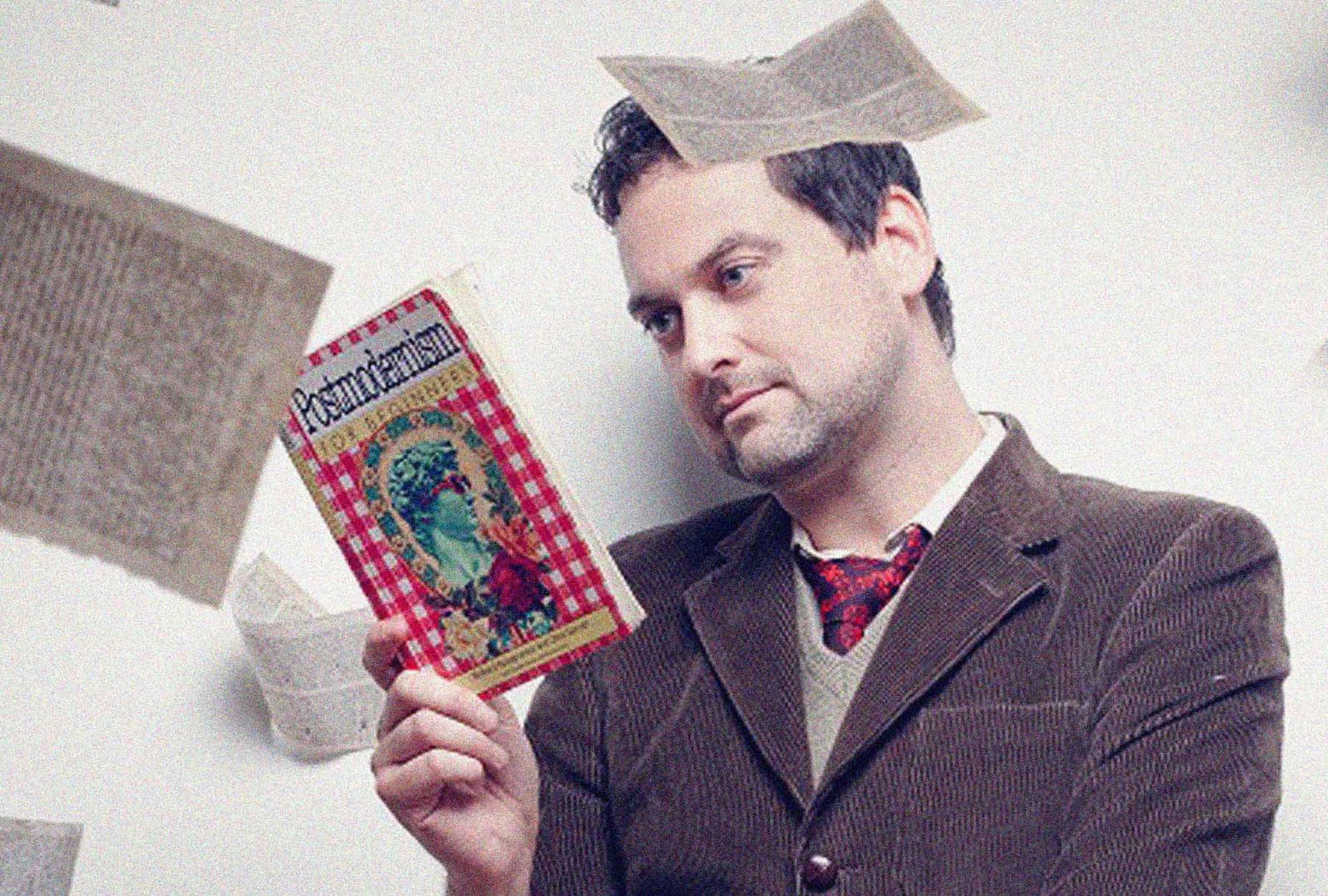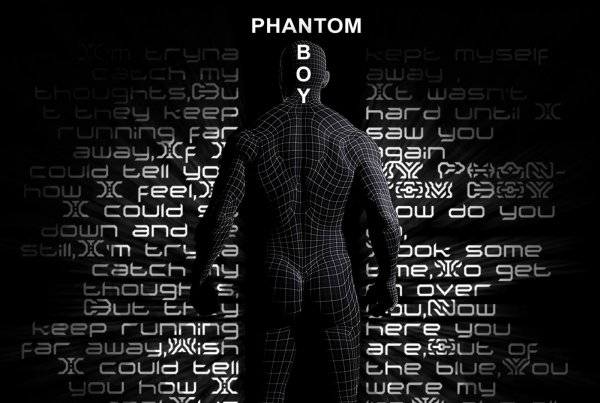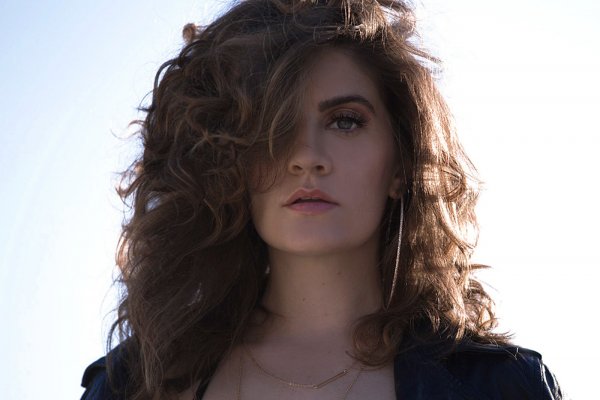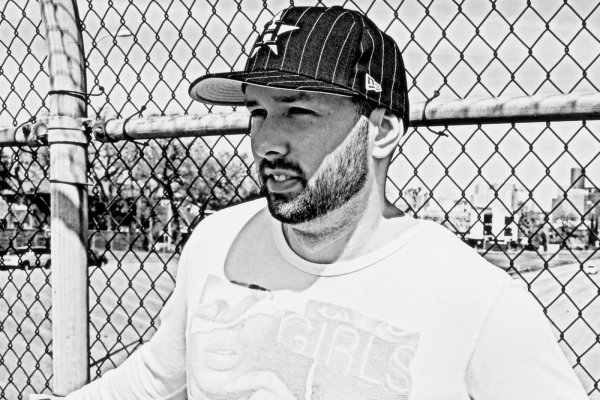Jamie Stevens: The Secret Rockstar
Back in the pre-square eyed days of art school in Paddington in the early 90s, you met your future collaborators hanging out the back of music shops, dialling digits in phone booths from numbers you tore off noticeboards. Nursing a pale ale in a delightfully dingy Brunswick pub, It was a pleasure to reminisce with Jamie Stevens and dust down his back catalogue of everything from his early inspiration to his future ambition. His complete lack of pretention almost makes it’s hard to believe he’s a multiple ARIA award winner with a string of huge, global releases under his belt. His eyes light up when we talk about books and art, secret 90s synth collectives, losing band comps and the glory days of his band Infusion. From Adam Freeland to Guy J, spoken word to stellar success, we spill the beans on over 20 years of solid music making, catching up with a man who could well be the nicest guy in electronic music.

Humble by his very nature, Melbourne based melody maker Jamie Stevens is not one to boast, but anyone who has listened to his music knows that he is more brilliant than his trademark egolessness would have you believe. Known for an adept and effortless production steeped in wise soul, he masters anything he turns his hand to, having shapeshifted through sounds, genres and passing trends over the years. Perhaps not many know that his first releases were as Oceania through self-confessed ‘nerd collective’ Clan Analogue out of Sydney.
‘I never even thought about being a music producer as a career,’ said Stevens, ‘But I do remember thinking about projecting interviews about making music. I used to daydream about it when I was reading music magazines. What would I answer if I was interviewed?’ Since these early thoughts, a prolific career has given him plenty of time to perfect the Q&A art.
Stevens used to have plenty of time to reflect on future dreams on the train from his home town of Wollongong to the big city. ‘I was originally trying to get into Randwick TAFE to do Graphic Design – that was the most prestigious course in Sydney. I didn’t get in, because I couldn’t draw a Chinese rice bowl in two minutes. They told me my portfolio was good but I failed that part. To be fair, i’m not very good under pressure.’
For the fledgling artist, where one door closed another door opened. ‘I got into College of Fine Arts to do a Fine Arts degree. It was such a broad degree encompassing all aspects of art and stoked the fire of so many different creative disciplines for me. I ended up doing video, theatre and performance, digital design, painting and sculpture. I loved every second.’ But university brought more than just creative academic minds together. Twiddling thumbs while hiding behind imported copies of NME and Mixmag and concealing secret obsessions with synthesisers in Discman headphones, you had to do a lot of digging and be more creative to find likeminded crew back then. But for those who looked hard enough, it was out there.
‘After a lecture, I saw a sheet on a noticeboard saying there were people who met up and shared synth stories. Looking back it sounds so nerdy. But back then it was like someone had opened the doors to all possibility. One of the guys in the year above me, Toby was already part of this collective. I tore off a number. I met up with Toby and we went to this thing at a warehouse in Redfern, from memory. There were about 15 or so fellow geeks all avidly poring over someone’s synth, discussing its unique intricacies. It doesn’t get much more geeky. But I’d found my calling.’
‘Later on through the collective, I met Ben Askins – I remember how I couldn’t believe that here was a guy who was into my kind of music from my home town. What the hell? Finding out there was someone else from Wollongong who was also into synths was, back then, a huge an eye opener. But then when I thought about it, sure, we had a huge grunge guitar scene, but all the newsagents sold keyboard and music technology magazines too. And they certainly weren’t just getting them in for me.’
‘I asked Ben if he wanted to come for a jam. We had a sesh for a couple of hours, jamming on some hardware sequencers and a drum machine. Excited with what we were coming up with, I spoke to my oldest high school friend, Manny Sharrad, who was a classically trained musician. We had been messing around making music together from the early days of high school making all kinds of Depeche Mode, Genesis and Pink Floyd-inspired tracks on a little four-track. We’d also make songs and plays for school friend’s birthdays and silly things like that. So anyway, I asked him if he would like to come over and be part of our little live idea. That’s how Infusion was born.’
In the final year of Stevens’ degree, a few weeks after forming, Jamie, Ben, Manny played their first gig together as Infusion at Wollongong University band comp. Things didn’t go as planned.
‘We didn’t get a place. It was 1994. We got trumped by some grunge band. Everyone was dancing and seemed to really enjoy it, but we had no drummer so the judges didn’t see us as a legitimate band.’
The next connection was waiting just around the corner too. ‘We ended up having to go to Darlinghurst to get a keyboard fixed by this guy who I’d known through the family, Danny Dunn. Danny had introduced me to acid house music way back in the late 80s. He had a studio at his house as far back as ‘88. He would give me piles of vinyl as I gorged myself on electronic imports; The Pet Shop Boys, Gary Numan, Yello, Depeche Mode. We had the same taste in music, which to a certain extent he instilled in me. He repaired and sold equipment and our keyboard was buggered. Hanging out in the shop was where we met Frank Xavier as he was working for Danny. We got to talking about music and found out that he was into really similar stuff with added hip-hop. I asked if he wanted to come for a jam. Frank became the last member of Infusion.’ It was then that the plumes of possibility began to spiral higher and twistier than the boys ever imagined.

In 1996, Ben left. With three members remaining and working closer together than ever before, it became about playing live and jamming. Recording came second. Infusion arguably hadn’t found their trademark sound, but they were nevertheless popular as they experimented with form. Not many underground electronic acts can claim that their first releases were on Sony, but Infusion’s first releases, between 1994 and 1996 were. After seeing them live and wanting to work with them, PeeWee Ferris, at the time one of the biggest rave DJs in Sydney, co-produced a track called ‘Green’ with Infusion. It just so happened that PeeWee’s brother worked for Dance Pool as part of Sony. ‘Green’ became a huge big rave anthem, charging at a very un-stevens like 140 bpm.
PeeWee helped produce another track, ‘Smokescreen’, which got nominated for an ARIA in 1996. It was slow, dirge like; almost like a Chemical Brothers album track, with a really repetitive bass and an early breakbeat/bassy kind of feel. The spoken word portion of the track was actually Stevens’ lecturer, Bill Seaman, who was a huge inspiration in a lot of his art.
‘Bill was an incredible video installation artist, a huge inspiration to me. I was lucky to have him as a lecturer at fine arts college. He made me view the world in a really different way and absorb everything around me with fresh eyes and appetite. He was definitely a mentor for me. He did a lot of spoken word song stuff as part of his research into Recombinant Poetics. Exploring the combination and recombination of media elements and processes in interactive and generative works of art in his studies, the mechanics of what he did really fascinated me. He gave me a DAT tape of his spoken word, which we sampled and put onto Smokescreen. We chose the ‘angle of incidence, smokescreens, encrypted mnemonics… repeat’ sample suspended in ambiguity for a love of Seaman’s poetry. Bill’s aesthetic was stream of consciousness, celebrating the spontaneity in writing. This was a benchmark for a lot of my composition too.’
Whether consciously or subconsciously, Stevens never chose to run with the pack. ‘Raves were getting harder and harder,’ said Stevens. ‘It was too aggressive, and certainly not where we felt most at home. We started going to clubs like Tweakin’ at Club 77 in the glory days of DJs like Sugar Ray, Ken Cloud, Phil Smart and Simon Caldwell, who is of course still playing today. This exposed to what would be classed as tech house these days; End Recordings, Mr C and that kind of stuff. With a lot of breakbeat and electro, they dared to mix everything up with varied tempos and styles. We were really inspired by that, which is where the connection with Phil Smart came in.’
Inspired by what they were hearing, in the late 90s they released their first twelve inchers like ‘Spike’ and ‘On the Outside’ on Thunk which was co-owned by Phil Smart. There were newer waves to ride, where the energy was different and there were less genre conventions.
‘We were really inspired by that 1996 to 2000 period,’ says Stevens. ‘Sugar Ray did these events called Love and Sabotage. They were amazing parties, up to 1,500 packed into Metro in Sydney. It was really exciting to be on the cusp of something new. And we had fun. We used to dress up for a lot of our sets. Once we were all dressed up as Mormons, with name tags for Elder Sharrad, Elder Stevens and Elder Xavier.’
But the big break and a chance to take their music global was waiting just around the corner, and yet again it was Phil Smart who came up with the goods.
‘Marine Parade record label boss Adam Freeland wanted to come to Australia to work on his album that would become Now and Them, his biggest album, with tracks like ‘We Want Your Soul’ and ‘Mindkiller.’ Phil knew Adam and put us in touch as Adam wanted to work with people in a studio in Sydney. Phil thought our cross genre sound and production would gel well. He was right, we had so many common denominators.’ So, Adam moved over to Australia and Jamie and Frank worked together with Adam to co-produce the album, which flung doors open for them on the global circuit.
‘Adam was the pivotal point in us leaving our day jobs to work on music full time – suddenly, after successfully scoring a management deal, we were throwing everything we had into Infusion. We put everything we had into it. When Adam went back to England, he told the guys who booked him for his residency at Fabric on Fridays that they had to book us. They did. Room one at Fabric on a Friday was our first international gig.’
Infusion rarely had tour managers and even in the glory days worked within tight budgets as slowly emerging superstars on a shoestring.

Despite living and working together, the relationship Jamie had with the Members of Infusion was one of creative camaraderie and mutual support. Between members, there wasn’t much friction. ‘For the most part, we paid our own way. The first tour we did, we played for free. We saved up all our money to get three return flights and pay accommodation to UK. It meant consuming 2 minute noodles for months on end but it was worth it.’
The early to mid 2000s lapped up Infusion’s sound. People had a connection with it – it dared to be different and cut and paste at will. Muddling the whole rock aesthetic with proggy breaks, house vibes and random samples was a moth to the noughties dancefloor flame. This culminated in touring their second album with Adam Freeland’s breakbeat protegees Evil 9 around Australia.
Neither band nor DJs, a clever hybrid encompassing so many different textures and genres, Infusion evolved from university band comp non-placers, to the dizzy heights of Arias and sell out performances at Womb, Fabric and Glastonbury.
Jamie was always happiest on stage, and with equal passion for both intimate venues and large scale, finds it hard to pick his favourite gigs. But it’s hard to get past the monumental scales of gigs like Creamfields Argentina in 2005.
‘Nothing prepares you for playing to 20,000 people. We were on after The Prodigy and before Paul Oakenfold, with everyone yelling at us in Spanish and heat turned up high. We were all quite literally shaking.’

Infusion created their own genre as they progressed. Because they didn’t pigeon hole themselves, they had the freedom to explore. ‘It was only when people brought it up and asked us, ‘are you a breakbeat act, do you play house, are you a rave techno act’ that we had to give genre any thought,’ says Stevens. ‘It’s what really set us apart. We weren’t confined. It’s truer today than it was back then that you have to clearly fit into a genre of the label you release on, or the nights you play at. We didn’t have that limitation.’
As things went from strength to strength with Infusion, they became much more than just local heroes, clocking up ARIA Music Awards for 2004’s "Girls Can Be Cruel" and in 2005 for their first album for Sony BMG, Six Feet Above Yesterday. Waves always happen. Adam Freeland's remix of the track "Better World" appears on the 2005 video game Burnout Revenge. Infusion played their last gig together with Leftfield in Australia 2013 – but for the master of reinvention it was by no means the end for Stevens, who has been focussing on solo work and production – the kind of dancefloor moments that cause euphoria and introspect to bloom simultaneously.
Of course, working solo is a different dynamic to working in a band. ‘When we played live, Frank would come up with a lot of the parts as loops on his MPC and we would jam over the top of what he created in studio, adding layers. We never really rehearsed the live stuff, unless we had a guitarist and drummer with us who needed to know the parts. We would just jam and be spontaneous. But ironically, when we were in the studio, we were such perfectionists. It took us so long to make something. Obsessing over the finer details, and a collision of ideas is basically what combined to create the magic. We all brought different things. It’s funny that none of us would have done it all by ourselves, but the strength of us together has given us the freedom to succeed separately.’
It’s artfully tattooed onto Stevens’ legacy that Guy J described his most celebrated solo tracks,‘the Wonder of You’ as one of the greatest musical pieces of all time.
‘When I made that track, I thought it would be wonderful to send to Lost & Found, but didn’t dare,’ laughs Stevens. ‘In light of Guy’s comments, it turns out I could have. Since then I’ve remixed for Lost & Found and released a beat-less electronica EP on his sister label, Armadillo.’
Stevens released ‘the Wonder of You’ on Toronto based microCastle and speaks highly of label boss Mitch Alexander, with whom he has a great working relationship. ‘He probably has the best taste in music out of any guy I know and has made an amazing label. If he doesn’t 100% believe in a track, he won’t release it. I admire his passion. He’s someone I bounce my music ideas off and are in regular contact. His help and inspiration made the success of the track go stellar.’

Stevens’ creative energy is currently being illuminated working on new material for forward thinking labels like microCastle, Cid inc’s Replug and Mexico’s Tenampa. ‘I’m busy refining things I’ve drawn a little bit of a line when it comes to working on remixes – at the moment, it’s mostly original material as my priority. I’ve got five tracks that are really close and I’m looking forward to getting some EPs out. I’m very protective of my own original work. I want it to be really special. I’m getting better at moving forwards alone.’
As a kid Stevens used to sit in his room and draw and listen to tapes. Keats is his favourite poet. He also has a kooky obsession with Letraset. ‘As an aspiring graphic designer I had drawers and drawers of the stuff, I used to be obsessed with different fonts.’ The much depth and introspection can be heard across his music on many levels.
So how long does it take to produce tracks of this calibre and where does the inspiration come from? ‘It’s certainly a labour of love, the Wonder of You took over a couple of years to get right, ’ says Stevens, who has recently made sharing his expertise into a day job as a mentor and tutor.
‘I have to say, I also find names of tracks something very personal and oftentimes challenging. A lot of my recent track names go back to something Bill taught me to do, which is keep a book of notice. Jot down anything you notice around you, smells, snippets of conversation, funny things and use it as a source of inspiration. It’s all about your art making the connections between your surroundings and the self. Don’t be afraid to cut it up into a patchwork of your thoughts that you can use at will. It becomes a part of you.’
The advice Stevens would give to aspiring producers is to exercise patience. ‘Of course it’s about hard work, and it’s crucial not to rush things. The industry is saturated, so what you need to bring is quality. Take the time to find your voice and master the tools. Like any art, you have to work for the tools to become second nature, so you can utilise them without thinking, thus unleashing creative freedom.’
‘It’s also important not to get disheartened when something doesn’t work out the first time. Work hard to develop something that is truly you. Certainly do not feel compelled to release your first track. Work on who you are. There’s far too much hunger in the industry for instant gratification. Dare to stand out. We need people who are in it for the right reasons with a talent that stands out. Do it for the right reasons. Make that reason be because you absolutely love it. And do it for long enough to make something that is truly special and uniquely you.’
‘Right now I’m loving tutoring and mentoring plus, as I said, finishing off more tracks that I’m happy with. The DJing is going well so hopefully stepping that up over the summer. So yeah, feeling very inspired so I just keep on creating and doing what I love!’




